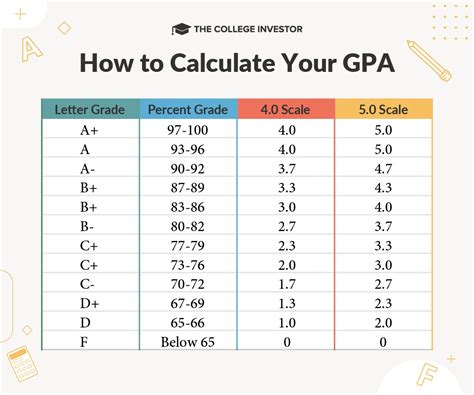GPA scale reporting is a system used by schools to communicate a student’s academic performance to parents, colleges, and other interested parties. The GPA scale is a numerical representation of a student’s average grade point average (GPA) over a period of time, typically a semester or year.

How GPA Scale Reporting Works
GPAs are calculated by assigning each letter grade a numerical value. The most common GPA scale is the 4.0 scale, in which A = 4.0, B = 3.0, C = 2.0, D = 1.0, and F = 0.0. Some schools use a 5.0 scale, in which A+ = 5.0, A = 4.0, B+ = 3.5, B = 3.0, and so on.
To calculate a student’s GPA, the numerical values of all their grades are added together and then divided by the total number of grades. For example, a student with an A, a B, and a C would have a GPA of 3.0 (4.0 + 3.0 + 2.0 / 3 = 3.0).
GPA Scale Reporting Options
There are several different types of GPA scale reporting options available to schools. The most common options are:
- Weighted GPA: A weighted GPA takes into account the difficulty of a student’s courses when calculating their GPA. For example, a student who takes all honors or AP courses may have a higher weighted GPA than a student who takes all regular courses, even if they have the same overall letter grades.
- Unweighted GPA: An unweighted GPA does not take into account the difficulty of a student’s courses when calculating their GPA. All grades are treated equally, regardless of the level of the course.
- Cumulative GPA: A cumulative GPA is a student’s overall GPA over their entire academic career. It is calculated by averaging all of a student’s grades from all of their courses.
- Semester GPA: A semester GPA is a student’s GPA for a single semester. It is calculated by averaging all of a student’s grades from all of their courses in that semester.
Benefits of GPA Scale Reporting
GPA scale reporting provides a number of benefits for students, parents, and schools. These benefits include:
- Provides a clear and concise way to communicate a student’s academic performance.
- Allows students to compare their performance to other students.
- Helps students to identify areas where they need to improve.
- Assists parents in monitoring their child’s academic progress.
- Provides schools with a way to track student performance and identify trends.
Challenges of GPA Scale Reporting
While GPA scale reporting is a valuable tool, it also has some challenges. These challenges include:
- GPAs can be misleading. A student with a high GPA may not necessarily be a good student, and a student with a low GPA may not necessarily be a bad student. This is because GPAs do not take into account factors such as a student’s motivation, work ethic, or extracurricular activities.
- GPAs can be inflated. Some schools inflate their students’ GPAs in order to make them look more competitive. This can make it difficult for colleges and other schools to compare students from different schools.
- GPAs can be deflated. Some schools deflate their students’ GPAs in order to make them look more rigorous. This can make it difficult for students from these schools to get into college or other schools.
Alternatives to GPA Scale Reporting
There are a number of alternatives to GPA scale reporting that schools can use to communicate a student’s academic performance. These alternatives include:
- Narrative evaluations: Narrative evaluations provide a written description of a student’s academic performance. They can include information about a student’s strengths, weaknesses, and areas for growth.
- Portfolios: Portfolios are collections of a student’s work that demonstrate their academic progress. They can include essays, projects, and other work samples.
- Standards-based grading: Standards-based grading is a system of grading that focuses on a student’s mastery of specific academic standards. Students are assessed on their ability to meet these standards, rather than on their overall GPA.
Conclusion
GPA scale reporting is a valuable tool for communicating a student’s academic performance. However, it is important to be aware of the limitations of GPAs and to use them in conjunction with other measures of student achievement.
Additional Resources
FAQs
What is the most common GPA scale?
The most common GPA scale is the 4.0 scale.
What is the difference between a weighted and an unweighted GPA?
A weighted GPA takes into account the difficulty of a student’s courses when calculating their GPA. An unweighted GPA does not take into account the difficulty of a student’s courses when calculating their GPA.
What is a cumulative GPA?
A cumulative GPA is a student’s overall GPA over their entire academic career.
What is a semester GPA?
A semester GPA is a student’s GPA for a single semester.
What are the benefits of GPA scale reporting?
GPA scale reporting provides a number of benefits for students, parents, and schools. These benefits include providing a clear and concise way to communicate a student’s academic performance, allowing students to compare their performance to other students, helping students to identify areas where they need to improve, assisting parents in monitoring their child’s academic progress, and providing schools with a way to track student performance and identify trends.
What are the challenges of GPA scale reporting?
GPA scale reporting has some challenges, such as GPAs being misleading, inflated, or deflated.
What are some alternatives to GPA scale reporting?
Some alternatives to GPA scale reporting include narrative evaluations, portfolios, and standards-based grading.
